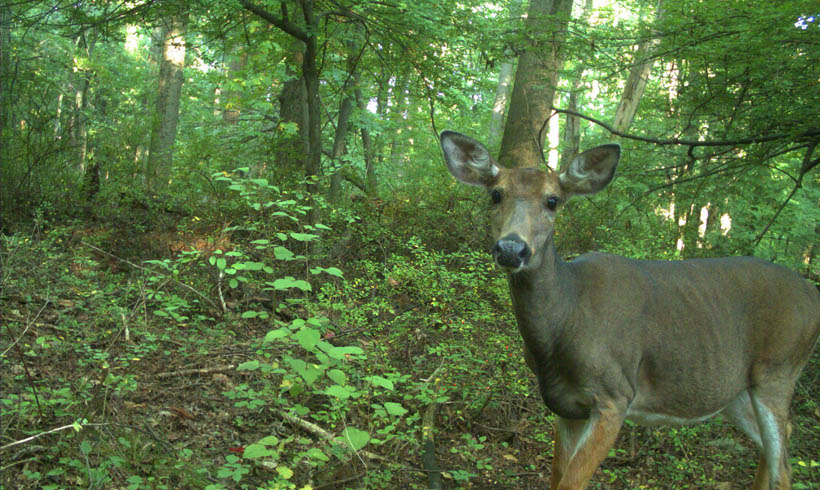Deer Research and Management Program
White-tailed deer are an important component of our ecosystem, aiding in nutrient cycling and providing food for larger predators. Unfortunately, over the last half century deer populations have grown beyond what the forest can support. Deer rely on native forest plants for food, so when there are too many deer, plants become scarce. As a result there are few young trees to replace an aging forest.






What does this mean for the future of Teatown’s forest? We anticipate that as our canopy trees die, native trees will not easily replace them. Instead, large openings in the forest will be filled with exotic, invasive plants. This will only occur if we take no action to change the course of our forests’ future.
Our research
Camera-trap surveys

Using heat and motion activated game cameras, we are able to estimate how many deer are on our preserve by identifying unique antlered deer (bucks) and counting the number of times bucks, does and fawns walk in front of the cameras. From here, we input the numbers into a formula developed by other researchers.
Forest Plots

Throughout the preserve we monitor forest characteristics, which include plant composition and abundance, plant height, and the presence of fallen trees. Measuring these components regularly allows us to track how the forest is changing over time, and helps us manage the future forests of Teatown. It is expected that as the deer populations decrease, we will see an increase in the variety and abundance of native plants.
Deer Exclosures

By fencing off small sections of forest, we are able to observe plant growth in the absence of deer. This data will be used to observe improvements in the forest after years of successful deer management.
Management
Teatown currently utilizes a small bow hunting program that starts on October 1st and extends into the winter. We have many safety precautions in place so as long as you and your dog stay on the trail, you will never even know the hunters are around.
The goal of this program is to improve forest health (rather than for sport), so we keep the number of hunters to a minimum and target does, or female deer, to better control the population. Deer harvested through this program are either kept by hunters for venison or donated to food pantries and other local organizations, extending the reach of this program into the community.
Using up to date research we will continually modify how we approach this difficult aspect of forest conservation and hope someday deer populations will be low enough to peacefully coexist within our forest ecosystem.

